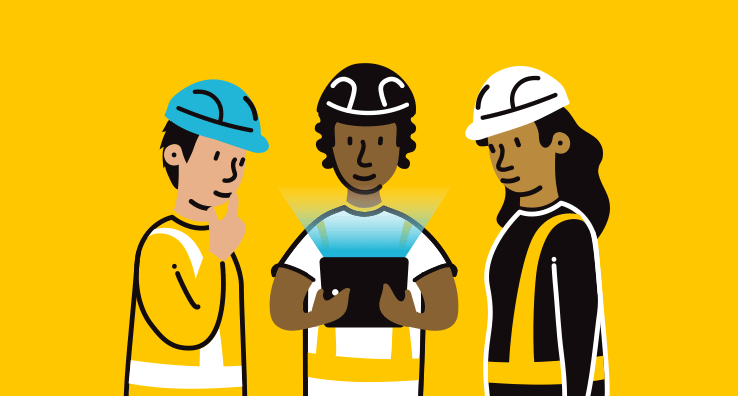Kinesthetic Learning: What Is It? (+Examples & Benefits)
What is kinesthetic learning and how is it applied in corporate training? Explore key characteristics, real-world examples, and strategies to enhance experiential learning in the workplace.

Hello EdTech Turkey Readers,
Some people learn best by listening or reading, while others retain information more effectively through movement, hands-on experiences, and active engagement. Kinesthetic learning is an approach that benefits individuals who learn best by physically interacting with their environment.
In today’s corporate training and workplace learning programs, kinesthetic learning is becoming increasingly popular. Active participation and experiential learning are particularly crucial for field workers, engineering teams, healthcare professionals, and professionals in manufacturing and operational roles.
In this article, we will explore the fundamentals of kinesthetic learning, how it can be applied in the workplace, and why it is such an effective learning method.
What Is Kinesthetic Learning?
Kinesthetic learning is a learning style in which individuals acquire knowledge through touch, movement, and physical engagement. Instead of absorbing information by reading or listening, kinesthetic learners prefer learning by doing.
This learning style is particularly effective in professions that require practical applications, problem-solving, and real-world interactions.
Key Characteristics of Kinesthetic Learners
✅ Hands-on Learning: They learn best through practice, real-world tools, simulations, and hands-on applications.
✅ Need for Movement: Sitting still for long periods can be challenging. Workshops, interactive training, and short breaks boost engagement.
✅ Problem-Solving Skills: Kinesthetic learners prefer trial-and-error methods and learn through direct problem-solving.
✅ Collaboration & Teamwork: They thrive in team projects and role-playing exercises.
✅ Spatial Awareness: Kinesthetic learners excel in physical environments and spatial reasoning, making them well-suited for fields like engineering, logistics, and design.
Benefits of Kinesthetic Learning
1️⃣ Increases Retention & Knowledge Retention
According to the 70-20-10 Learning Model, 70% of learning happens through hands-on experience. Kinesthetic learners retain information more effectively by actively engaging with materials.
2️⃣ Enhances Problem-Solving Abilities
By translating theory into practice, kinesthetic methods help employees develop critical thinking and decision-making skills.
3️⃣ Boosts Engagement & Motivation
Passive listening can be demotivating. When employees actively participate, they become more invested in the learning process.
4️⃣ Improves Fine Motor Skills
Kinesthetic learning enhances precision-based skills required in medical procedures, assembly work, and hands-on craftsmanship.
5️⃣ Faster Adaptation to Practical Environments
Professionals in manufacturing, healthcare, and engineering can apply theoretical knowledge more quickly in real-world settings.
Examples of Kinesthetic Learning in the Workplace
✅ Hands-on Simulations:
- Employees practice using a new software system or machine in a simulated environment before using it in real life.
- Virtual simulations train factory workers on safety protocols without real-world risks.
✅ Role-Playing & Scenario Training:
- Customer service representatives practice realistic customer interactions to enhance communication skills.
- Leadership and teamwork exercises use role-playing to improve collaboration and decision-making.
✅ On-the-Job Training (OJT):
- Employees learn by performing tasks under the supervision of an experienced mentor.
- Training takes place in real work environments, allowing employees to develop skills while working.
Kinesthetic Learning Strategies for Corporate Training
✅ Incorporate Hands-on Activities
Enrich training programs with problem-solving exercises, prototyping, and physical engagement activities.
✅ Use Gamification
Incorporate points, rewards, and competitive elements to encourage participation and motivation.
✅ Encourage Movement & Physical Interaction
Instead of prolonged sitting, implement group work, discussions, and movement-based activities to enhance engagement.
✅ Leverage Interactive Technologies
- Virtual Reality (VR) & Augmented Reality (AR) for immersive learning experiences.
- Touchscreens & interactive simulations to reinforce kinesthetic learning.
✅ Apply Project-Based Learning (PBL)
Assign real-world projects where learners apply their skills directly in the workplace.
EdTech Turkey Insight
Kinesthetic learning is not just a learning preference but a strategic approach that enhances business outcomes, increases motivation, and supports innovation.
Practical training programs in fields like manufacturing, engineering, healthcare, retail, and customer service accelerate employee development and improve overall performance.
Note:
For more details or to request a custom training program, feel free to contact us. Our expert team is ready to assist you!
Copyright Notice:
All content on this website is protected by copyright laws. Unauthorized copying, distribution, or reproduction is strictly prohibited. All rights reserved.